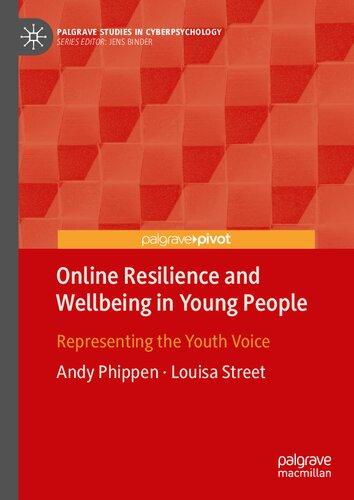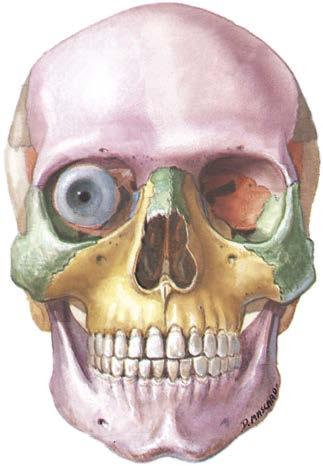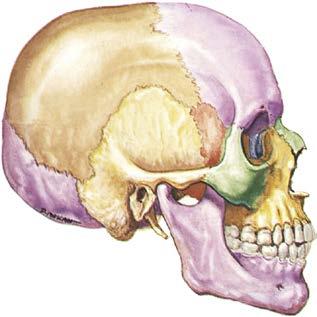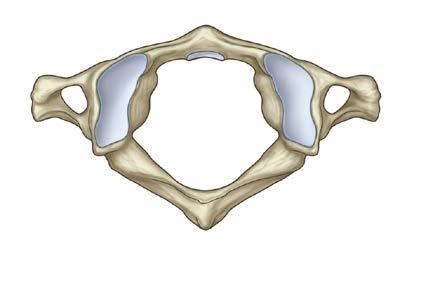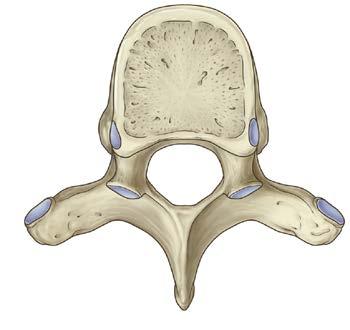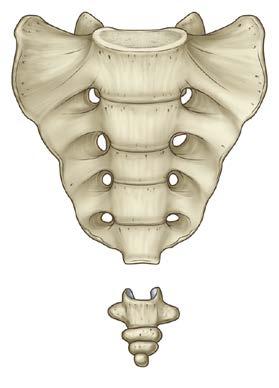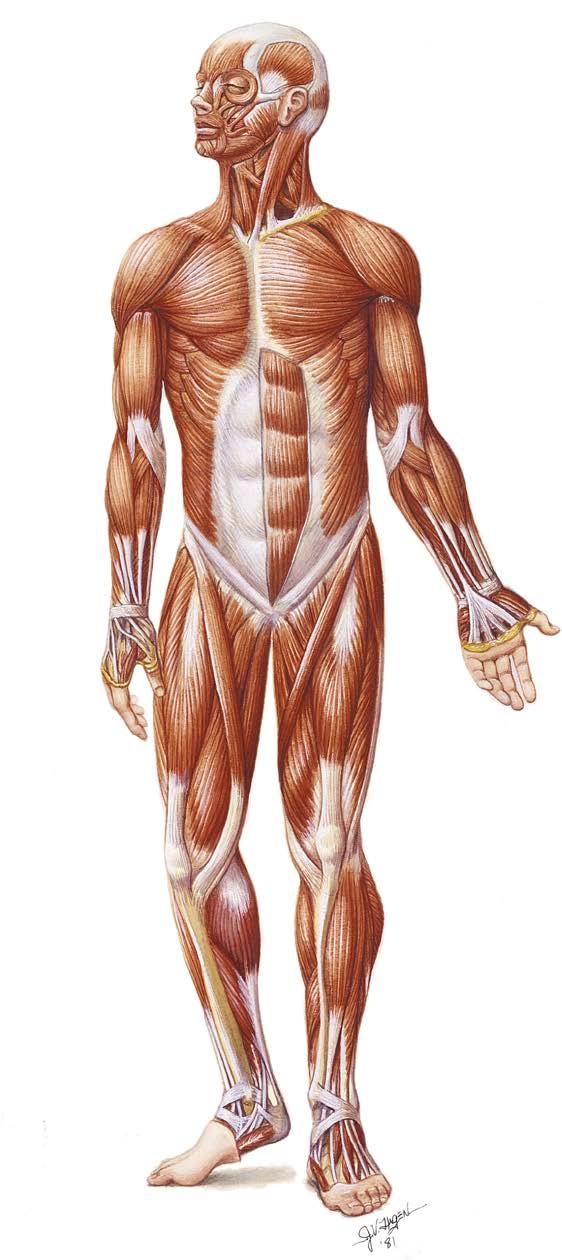SPANISH-FRENCH-ENGLISH EQUIVALENTS OF COMMONLY USED MEDICAL TERMS AND PHRASES
English Spanish
What is your name?
Where do you work?
¿Cómo se llama usted? (¿Cuál es su nombre?)
¿Dónde trabaja? (¿Cuál es su profesión o trabajo?) (¿Qué hace usted?)
You will need blood and urine tests. Usted va a necesitar pruebas de sangre y de orina.
French
Comment vous appelez-vous?
Où travaillez-vous?
Vous avez besoin d’une analyse de sang et d’urine.
You will be admitted to a hospital. Usted será ingresado al hospital. Vous allez être admis à un hôpital. May I help you?
¿Puedo ayudarle?
How are you feeling? Where does it hurt? ¿Cómo se siente? ¿Dónde le duele?
Do you feel better today?
¿Se siente mejor hoy?
Puis-je vous aider?
Comment vous sentez-vous? Où avez vous mal?
Vous sentez-vous mieux aujourd’hui? Are you sleepy?
¿Tiene usted sueño?
Avez-vous sommeil?
The doctor will examine you now. El doctor le examinará ahora. Le médecin va vous examiner maintenant. You should remain in bed today. Usted debe quedarse en su cama hoy. Vous devriez rester au lit aujourd’hui. We want you to get up now. Queremos que se levante ahora. Nous voulons que vous vous leviez maintenant.
You may take a bath. Puede bañarse.
Vous pouvez prendre un bain. You may take a shower. Puede darse una ducha. Vous pouvez prendre une douche. Have you noticed any bleeding? ¿Ha notado algún sangrado?
Avez-vous remarqué un saignement?
Do you still have any numbness? ¿Todavía siente adormecimiento? Ressentez-vous encore un engourdissement?
Do you have any drug allergies? ¿Es usted alérgico(a) a algún medicamento?
Souffrez-vous d’allergie à n’importe quel médicaments?
I need to change your dressing. Necesito cambiar su vendaje. Je dois changer votre pansement. What medications are you taking now? ¿Qué medicamentos está tomando ahora? Quels médicaments prenez-vous actuellement?
Do you take any medications? ¿Toma usted algunas medicinas? Prenez-vous des médicaments?
Do you have a history of ¿Padece
a. heart disease?
b. diabetes?
c. epilepsy?
d. bronchitis?
e. emphysema?
f. asthma?
Do you need a sleeping pill?
Do you need a laxative?
Relax. Try to sleep.
a. del corazón?
b. de diabetes?
c. de epilepsia?
d. de bronquitis?
e. de enfisema?
f. de asma?
Avez-vous déjà souffert de
a. maladie du coeur?
b. diabète?
c. épilepsie?
d. bronchite?
e. emphysème?
f. asthme?
¿Necesita una pastilla para dormir? Avez-vous besoin d’un somnifère?
¿Necesita un laxante/purgante? Avez-vous besoin d’un laxatif?
Relájese. Trate de dormir.
Détendez-vous. Essayez de dormir. Please turn on your side. Favor de ponerse/virarse de lado. Veuillez vous tourner sur le côté.
Do you need to urinate?
Have you had any sickness from any medicine?
Are you allergic to anything? Medicines, drugs, foods, insect bites?
Do you use contact lenses, dentures? Do you have any loose teeth, removable bridges, or any prosthesis?
Press the button when you want a nurse.
¿Tiene que orinar?
¿Le ha caído mal alguna medicina?
¿Es usted alérgico(a) a algo? ¿Medicinas, drogas, alimentos, picaduras de insectos?
¿Usa usted lentes de contacto, dentadura postiza? ¿Tiene dientes flojos, dientes postizos, o cualquier próstesis?
Apriete el botón cuando quiera llamar a una enfermera.
Avez-vous besoin d’uriner?
Avez-vous déjà eu des réactions à n’importe quel médicament?
Êtes-vous allergique à quelque chose? Médicaments, drogues, aliments, piqûres d’insectes?
Utilisez-vous des verres de contact, des prothèses dentaires? Avez-vous des dents qui se déchaussent, des ponts amovibles ou une prothèse?
Appuyez sur le bouton pour appeler une infirmière.
Spanish adapted from Lister S. Wilber CJ: Medical Spanish: the instant survival guide, ed 4, London, Butterworth. French translations provided by Catherine Moor, translator, Montreal, Quebec, Canada.
EDITOR’S FOREWORD
Health care is complex, nuanced, and evolutionary in nature. The changes in health care can often be dramatic and rapid. Language is a tool of communication, and the language of health care is also complex, nuanced, evolving, and informed by words no longer in common use. The overarching goal of this edition of Mosby’s Medical Dictionary is to assist the user to understand how words and phrases commonly encountered in the health care literature and clinical practice are used and have been used in the past, understand how they are spelled and pronounced and, in many instances, see examples of the words and phrases by utilizing full-color illustrations. Mastering the body of knowledge essential to professional practice requires access to definitions that enhance the understanding of the language of health care. All of the entries in this edition of Mosby’s Medical Dictionary have been developed and reviewed to provide a single source of authoritative, up-to-date definitions for a wide variety of health care professionals and individuals who wish to better understand health care information and communicate it effectively.
There is an important change in this edition of Mosby’s Medical Dictionary. This change is an increased emphasis on the use of language that is more interprofessional and inclusive in nature. There is no doubt that the team approach to patient care improves patient care outcomes. Understanding the unique use of language by health care professionals is an important step in the communication that is essential to ensure collaboration and appropriate patient care.
The characteristics that have made the previous nine editions of Mosby’s Medical Dictionary an invaluable resource for the past 25 years have been retained. These include the use of a large and easyto-read typeface, encyclopedic definitions for commonly referenced key terms, comprehensive entries for many drugs and medications, and a commonsense, strictly alphabetical organization of definitions. To assist readers in recognizing alternative spellings, selected British spellings are included where appropriate. Students, educators, and practitioners have praised the comprehensive and reliable nature of previous editions, and great care has been taken to ensure that tradition is continued in this 10th edition.
One of the most distinct features of Mosby’s Medical Dictionary is the inclusion of high-quality, full-color illustrations and photographs throughout the book to enhance and clarify definitions of terms with a visual representation of many diseases, conditions, and equipment. Mosby’s Medical Dictionary was the first English-language medical, nursing, or health professional’s dictionary to use full-color images. In addition, a Color Atlas of Human Anatomy contains clearly labeled helpful illustrations and is placed at the front of the dictionary for easy access.
It is impossible to adequately thank and acknowledge all of the many individuals who have contributed to the 10th edition of Mosby’s Medical Dictionary. As an editor, I have been informed by innumerable students over the years, as well as colleagues in many professions and at many institutions, and inspired by the many patients that I, my students, and my colleagues have cared for and about. An interdisciplinary Editorial Board and numerous consultants and experts reviewed every entry in Mosby’s Medical Dictionary. I am deeply indebted to all of them for the care and wisdom they shared in providing suggestions for revision and for additional entries.
It is an honor to work with professionals as dedicated to meeting the needs of readers as those of Elsevier. Tamara Myers provided expert guidance and was instrumental in gaining access to the considerable resources of Elsevier-Mosby, Saunders, Churchill-Livingstone, and Butterworth-Heinemann and in developing a new database to facilitate the review and collaboration of multiple individuals in the construction of this edition. Sarah Vora was an inspirational partner who was sensitive to the need to keep the work moving forward while at the same time sensitive to the need to allow time to properly research and refine the entries. Babette Morgan and Jodi Willard were extraordinary in their helpful and constructive input on entries and the labeling of images.
In addition, my colleagues and students at Rutgers University, School of Nursing—Camden patiently reviewed materials, answered questions, and always provided just the right suggestion to assist me in making each and every definition and image maximally useful. I appreciate their contributions and trust they will all be proud to be associated with the 10th edition of Mosby’s Medical Dictionary. In particular, I would like to acknowledge two students from the Rutgers School of Nursing—Camden: Steven Hale, who worked with me on an Independent Study focused on the language of health care, and Dzianis Sulkouski, a research assistant who provided a review in the database. In addition, Tyshaneka Saffold and Laurie Davis assisted with images.
It is impossible to conclude without a thank you to my family. My niece, Olivia Felicia, is a talented photographer who enthusiastically assisted with images. My son Kevin Patrick is an Occupational Therapist who was generous with his time and expertise. I am fortunate to have children familiar with Latin for consultation. Overall, my family has always been willing to indulge my passion for words and serve as the definition of love.
My thanks also go to the readers for using this work to learn or to update their ability to communicate with others and improve patient care.
Marie T. O’Toole, EdD, RN, FAAN
Wendy Pentland, BSc (OT), MEd, PCC, PhD
Associate Professor and Chair—Graduate Program
School of Rehabilitation Therapy Queen’s University Ontario, Canada
Rosalynde Peterson, DNP, RN Nursing Instructor Department of Nursing Shelton State Community College Tuscaloosa, Alabama
Stephen M. Picca, MD (Retired) Anesthesiology Nassau University Medical Center East Meadow, New York
Kevin Pierce, MBA, NCBTMB Project Associate Massage Therapy Body of Knowledge Massage Therapy Body of Knowledge Stewards Waukesha, Wisconsin
Nancy M. H. Pontes, PhD, RN, APN, FNP-BC, DRCC
Assistant Professor School of Nursing—Camden Rutgers University Camden, New Jersey
Nancy Powell, PhD, MSN, CNM, RNC-OB Director, Professional Practice and Development AtlantiCare Regional Medical Center Atlantic City, New Jersey
Katherine Soss Prihoda, DNP, APN
Assistant Professor School of Nursing—Camden Rutgers University Camden, New Jersey
Rhonda Priola, BA Adjunct Instructor Medical Administrative Services Kilian Community College Sioux Falls, South Dakota
David Rhode, PhD Associate Professor and Division Coordinator Math/Science Andrew College Cuthbert, Georgia
Joseph William Robertson, DDS, BS Department of Nursing and Health Professions Oakland Community College Royal Oak, Michigan
Krista Lee Rompolski, MS, PhD Assistant Professor Health Sciences
Drexel University Philadelphia, Pennsylvania
Tyshaneka Saffold, BSN, MSN
Faculty
School of Nursing—Camden Rutgers University Camden, New Jersey
Allan Schwartz, DDS, CRNA
Staff Certified Registered Nurse Anesthetist Anesthesiology
St. Louis University Hospital
St. Louis, Missouri; Assistant Clinical Professor Periodontics
Center for Advanced Dental Education at St. Louis University St. Louis, Missouri
Deborah Selm-Orr, BSN, MS, DNP
Medical Oncology Nurse Practitioner Medical Oncology
Cancer Treatment Centers of America Philadelphia, Pennsylvania
Sabine Marie Simmons, EDd, MSM, RHIA, CHOS, CPAR
Assistant Professor
Academic Coordinator of Education
Health Information Management
Alabama State University Montgomery, Alabama
Nicole Smirl, BS, BSN
Registered Nurse
Taos, New Mexico
Travis E. Sonnett, PharmD, FASCP
Clinical Pharmacology Specialist/Inpatient Pharmacy Supervisor
Mann-Grandstaff VA Medical Center
Spokane, Washington; Adjunct Clinical Professor
Pharmacotherapy
Washington State University Spokane, Washington
Rachel Spiering, PhD Practitioner
Developmental Immunology
La Jolla Institute for Allergy and Immunology La Jolla, California
Jennifer Michelle Stevenson, MS
Speech Language Pathologist
Great Beginnings Early Childhood Center
Lee’s Summit R-7 School District
Lee’s Summit, Missouri
Matt Stewart, MD, PhD
Assistant Professor
Department of Otolaryngology, Head and Neck Surgery
Johns Hopkins Hospital
Baltimore, Maryland
Gary Thibodeau, PhD
Chancellor Emeritus and Professor Emeritus of Biology University of Wisconsin—River Falls River Falls, Wisconsin
Megan Varellas, MMSc, CAA
President
American Academy of Anesthesiologist Assistants Asheville, North Carolina
Anup Amit Vora, MD Urologist Chesapeake Urology Associates Silver Spring, Maryland
Kajal Pandya Vora, FNP-C, MSN, APRN Family Nurse Practitioner Sheffrin Men’s Health Atlanta, Georgia; Faculty, MSN-FNP Program (Virtual) Olivet Nazarene University Bourbonais, Illinois; Professor of Nursing, MSN-FNP Program (Virtual Campus) Walden University Minneapolis, Minnesota; Visiting Professor of Nursing, BSN Program Chamberlain College of Nursing Atlanta, Georgia
Nirav Amit Vora, MD Vascular and Interventional Neurology Interventional Radiology and Neurology Riverside Methodist Hospital Columbus, Ohio
Karen S. Ward, PhD, MSN Professor School of Nursing
Middle Tennessee State University Murfreesboro, Tennessee
Patti Ward, RN, PhD Program Director, Radiologic Technology Department of Health Sciences
Colorado Mesa University Grand Junction, Colorado
Paige Wimberley, BSN, MSN, PhD(c), APN, RNP, RN-CS, CNE
Assistant Professor
Nursing
Arkansas State University Jonesboro, Arkansas
Nancee Wozney, RN, PhD
Dean of Nursing and Allied Health Department of Nursing
Minnesota State College Winona, Minnesota
Nancy H. Wright, RN, BS, CNOR(R) CEO
Wright Solutions—Educational Compliance and Curriculum Development Helena, Alabama
Alan H.B. Wu, PhD
Professor, Laboratory Medicine
University of California, San Francisco San Francisco, California
Nicole Zeller, MSN, RN, CNE
Nursing Faculty
Allied Health-Nursing
Lake Land College Mattoon, Illinois
In the last example, the reader is asked to make the com-monsense assumption that the primary accent of the headword becomes a secondary accent in the run-on term: /baktir′ē·of′əjē/.
n location: Pronunciation may be given for any boldface term and may occur anywhere in an entry:
aura /ôr ′e /, 1. pl. aurae /ôr ′ē/, a sensation . . . 2. pl. auras, an emanation of light . . . micrometer, 1. /mīkrom ′ə t ə r/, an instrument used for. . . 2. /mī ′krōmē ′t ə r/, a unit of measurement . . .
Occasionally it is given for a lightface term:
b.i.d., (in prescriptions) abbreviation for bis in die /dē ′ā/, a Latin phrase meaning . . . boutonneuse fever. . . , an infectious disease . . . a tache noire /täshnô·är ′ / or black spot . . .
n letterword versus acronym: Letterwords are abbreviations that are pronounced by sounding the names of each letter, whereas acronyms are pronounced as words. If the pronunciation of an abbreviation is not given, the abbreviation is usually a letterword:
ABO blood groups [read / ā ′b ē ′ō ′/, not/ā ′bō/]
If the pronunciation is an acronym, this is indicated by pronunciation:
AWOL / ā ′wôl/
Some abbreviations are used as both:
JAMA /jä ′mä, jam ′ə, j ā ′ā ′em ′ā ′/
n foreign sounds: Non-English sounds do not occur often in this dictionary. They are represented by the following symbols:
/œ/ as in (French) feu /fœ/, Europe /œrôp′/; (German) schön /shœn/, Goethe /gœ′t ə / /Y/ as in (French) tu /tY/, déjà vu /d ā zhävY′ /; (German) grün /grYn/, Walküre /vulkY′r ə / /kh/ as in (Scottish) loch /lokh/; (German) Rorschach / rôr ′ -shokh/, Bach /bokh, bäkh/ /kh/ as in (German) ich /ikh /, Reich /rīkh/ (or, approximated, as in English fish: /ish/, /rīsh/) /N/ This symbol does not represent a sound but indicates that the preceding vowel is a nasal, as in French bon /bôN/, en face /äNfäs′/, or international /aNternäsyōnäl′/. /nyə/ Occurring at the end of French words, this symbol is not truly a separate syllable but an /n/ with a slight /y/ (similar to the sound in ‘‘onion’’) plus a near-silent / ə /, as in Bois de Boulogne / b lō′nyə /, Malgaigne /mälg ā′nyə /.
Because this work is a subject dictionary rather than a language dictionary, certain foreign words and proper names are rendered by English approximations. Examples are Müller / mil′ə r/ (which is closer to German than /mY′l ə r/), Niemann / nē′mon/ (which is closer than /nē′män/), Friedreich /frēd′rīsh/ (which is close enough for anyone not used to pronouncing / kh/), or jamais vu, for which three acceptable pronunciations are given: /zhäm ā vY′/ (near-French) and the approximations /zhäm ā vē ′ / and /zhäm ā v ′ / (/-vē′/ being much closer to French than /-v ′ /). Depending on usage, a foreign word or name may be given with near-native pronunciation, with entirely assimilated English pronunciation (as de Quervain’s
fracture /de k ə rv ā nz′/), or with both (as Dupuytren’s contracture /dYpYitraNs′, dēpē·itranz′/ or Klippel-Feil syndrome /klipel ′f ə l′, klip′ə lfīl′/).
At any rate, the English speaker should not hesitate to follow whatever is usage in his or her working or social environment.
Many of the numerous Latin terms in this dictionary are not given with pronunciation, mainly because there are different ways (all of them understood) in which Latin is pronounced by the English speaker and may be pronounced by speakers elsewhere. However, guidance is given in many cases, often to reflect common usage.
latin and greek plurals: The spelling of Latin and Greek plurals is shown in most instances. However, when the plural formation is regular according to Latin and Greek rules, the pronunciation is usually not included. Therefore, the following list shows the suggested pronunciation of selected plural endings that are frequently encountered in the field of medicine:
plural
endings examples
-a /-ə/ inoculum, pl.inocula /inok′y lə/ -ae /-ē/ vertebra, pl.vertebrae /vur′təbrē/ -ces /-sēz/ thorax, pl.thoraces /thôr′əsēz/ apex, pl.apices /ā′pisēz/ -era /-ərə/ genus, pl.genera /jen′ərə/ -ges /-jēz/ meninx, pl.meninges /minin′jēz/ -i /-ī/ calculus, pl.calculi /kal′kyəlsī / coccus, pl.cocci /kok′sī/ -ia /-ē·ə / criterion, pl.criteria /krītir′ē·ə/ -ides /-idēz/ epulis, pl.epulides /ipyoo′lidēz/ -ina /-ənə/ foramen, pl.foramina /f ə ram′ənə/ -ines /-ənēz/ lentigo, pl.lentigines /lentij ′ ənēz/ -omata /-ō′m ətə/ hematoma, pl.hematomata /hē′mə tō′mətə/ -ones /-ō ′ nēz/ comedo, pl.comedones /kom′ə dō′nēz/ -ora /-ərə/ corpus, pl.corpora /kôr′pərə/ femur, pl.femora /fem′ərə/ -ses /-sēz/ analysis, pl.analyses / ənal′əsēz/ -udes /′ dēz/ incus, pl.incudes /ink ′dēz/ -us /- s/ ductus (/duk ′ təs/), pl.ductus /duk′t s/
note : Notwithstanding the listing of Latin and Greek plurals in this dictionary, and notwithstanding the foregoing examples, in most instances it is acceptable or even preferable to pluralize Latin and Greek words according to the rules of English words. (For certain kinds of entries, both the English and the foreign plurals are given in this dictionary, usually showing the English form first, as, for example, in nearly all -oma nouns: hematoma, pl. hematomas, hematomata.)
W.D.G.
I. ETYMOLOGIES AND EPONYMS
The word roots, or etymologies, of the headwords in this dictionary are shown in square brackets following the pronunciations of the headwords. Meanings are given in roman typeface and represent the original connotation of the word from which the medical term is derived. In compound medical terms formed from two or more elements, a plus sign (+) is used to


